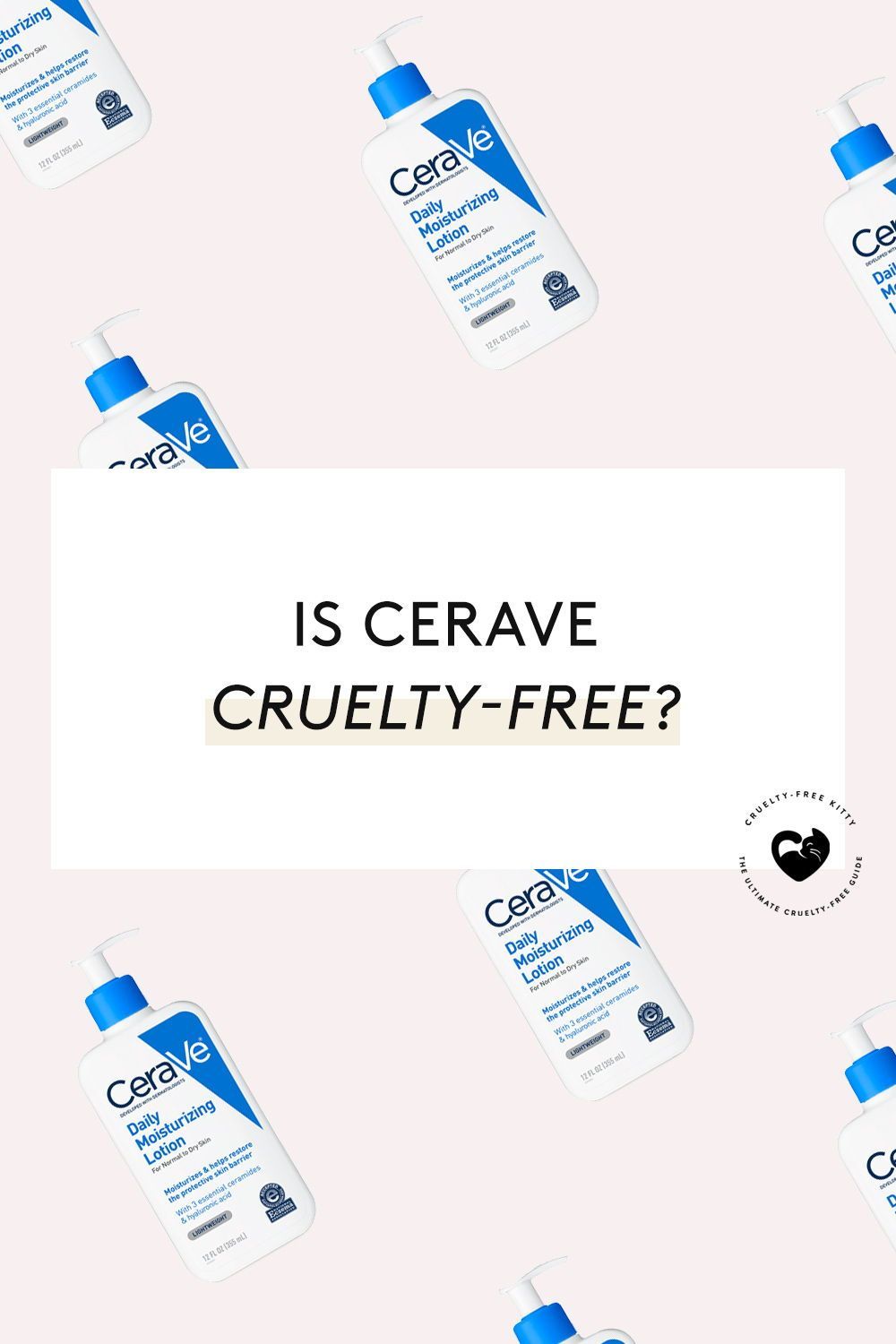In a world increasingly cognizant of ethical consumerism, the quest for cruelty-free skincare products has garnered significant attention. Among these brands, CeraVe has emerged as a mainstream contender, celebrated for its dermatologist-reviewed formulations. However, the pivotal question lingers: Is CeraVe truly animal cruelty-free? This inquiry necessitates a profound exploration of the brand’s ethical practices and the overarching landscape of the cosmetic industry.
To demystify the concept of cruelty-free in the skincare realm, it is essential to dissect what this title entails. The term “cruelty-free” signifies that a brand does not engage in animal testing for the development or production of its products. Yet, the connotations surrounding this label can be ambiguous. For instance, some companies may tout cruelty-free status while still selling in regions where animal testing is mandated by law, such as mainland China. Thus, understanding the nuances behind CeraVe’s practices is crucial.
Founded in 2005, CeraVe was designed with the intention of providing quality skincare while addressing diverse skin concerns. The brand quickly garnered a loyal following due to its commitment to formulating products that include essential ceramides to support skin barrier function. However, the question of animal testing arose as CeraVe expanded its market reach. As we delve into the specifics, it begs the question: Does a brand that harnesses science to develop effective skincare have a responsibility to uphold ethical standards regarding animal welfare?
In 2015, CeraVe was acquired by L’Oréal, a conglomerate that has faced scrutiny over its animal testing policies. Although L’Oréal has made strides in developing alternative testing methods and claims to be committed to ending animal testing globally, the integration of CeraVe into this conglomerate raised red flags for consumers advocating against cruelty. The amalgamation seemed to dilute CeraVe’s independent ethos, prompting many to speculate about the implications for its animal welfare stance.
When examining whether CeraVe engages in animal testing, one must consider their official policies. According to available information from the brand, CeraVe asserts that it does not conduct animal testing on its products and does not ask others to do so on its behalf, except where required by law. This statement places CeraVe in a complex dilemma: while it professes to uphold a cruelty-free ethos, its association with L’Oréal brings an inherent challenge. The brand’s practices, partly influenced by corporate policies in regions requiring animal testing, complicate this narrative. Thus, consumers are left to ponder, can a brand be both ethical and global in a market still so intertwined with outdated testing practices?
As consumers, we are often presented with tantalizing choices in the skincare aisle, each promising to deliver healthful benefits to our skin. Yet, these choices carry ethical weight. The challenge lies in deciphering genuine partnerships that advocate for animal welfare versus those that may profit from the ambiguity of their practices. In the case of CeraVe, customers who prioritize cruelty-free products may find themselves torn between the convenience and efficacy of these formulations versus the ethical implications tied to the brand’s broader corporate structure.
Furthermore, the conversation should extend beyond the notion of animal testing alone. The environmental impact of skincare production and the quality of ingredients also demand attention. Many conscientious consumers advocate for products that not only refrain from animal testing but also utilize sustainable and ethically sourced ingredients. In this light, CeraVe’s focus on accessibility and effectiveness must also confront the question of sustainability. Are their ingredients harvested responsibly? Does their production process harbor a respect for both animal and environmental welfare?
Amidst this ongoing dialogue, it is vital to acknowledge the advancements made in cruelty-free alternatives and the companies that champion these initiatives. Diverse brands are emerging, offering innovative formulations without subjecting animals to testing. These options resonate particularly with younger generations who are increasingly aligned with ethical values in their purchasing decisions. The goal should be to foster a beauty industry devoid of animal cruelty while promoting products rooted in compassion and corporate responsibility.
So, where does that leave consumers who are drawn to CeraVe’s efficacy? The playfulness of the inquiry remains: Can you enjoy the benefits of a skincare line known for its dermatological expertise while upholding your values against animal cruelty? This paradox invites individuals to engage with brands more critically, encouraging a shift in purchasing habits that favor transparency and integrity over mere brand loyalty.
In conclusion, the designation of CeraVe as a cruelty-free brand is entangled within a web of corporate ethics and consumer responsibility. As the market evolves, consumers wield the power to demand more from their favorite brands. The unyielding dialogue surrounding CeraVe encourages not only a reassessment of personal values but an impetus for companies to better align with the growing demand for ethical practices. It is within consumer choice that we can pursue a skincare future that prioritizes compassion, aligns with cruelty-free principles, and guarantees efficacy without compromising on ethics. The true skincare truth beckons for further introspection and collective action in the name of animal welfare.









